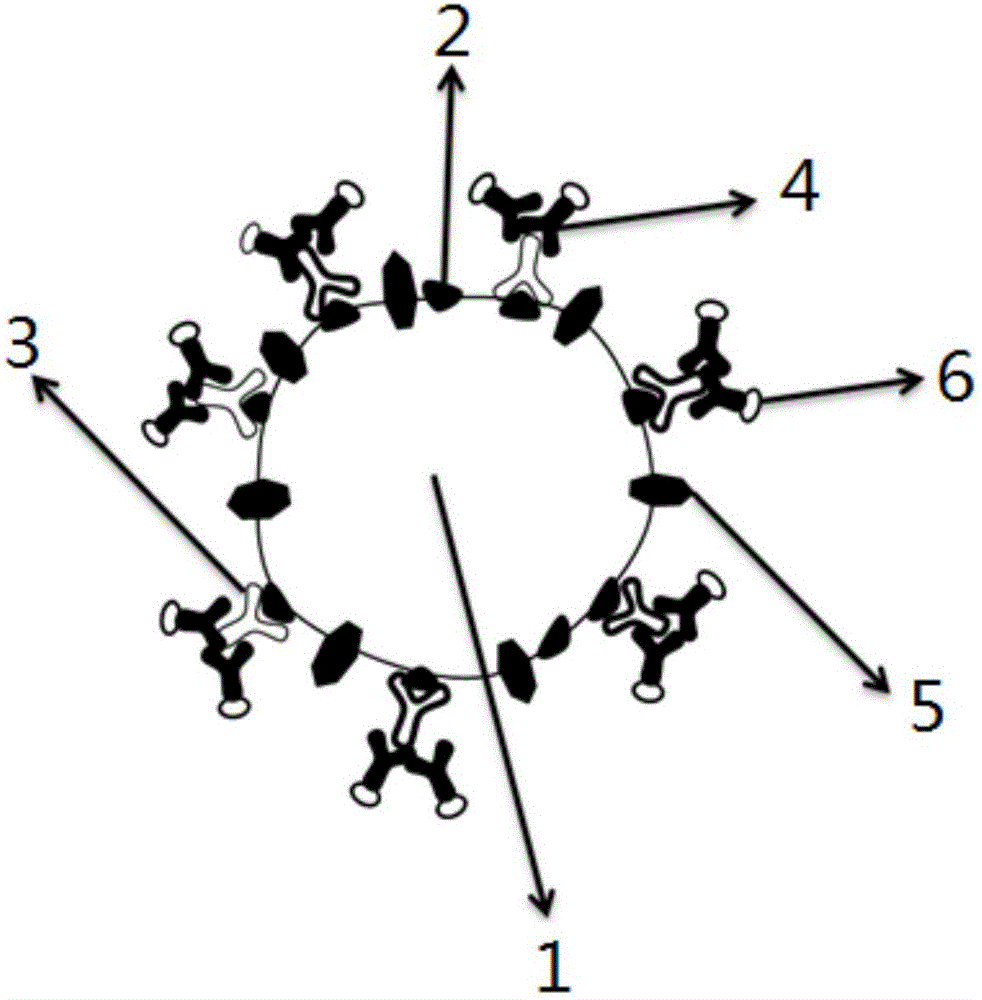A super-resolution optical imaging method based on a single-molecule positioning process
An optical imaging and super-resolution technology, applied in the field of biophotonics technology, can solve the problems of inability to observe exosomes in detail, and achieve the effects of targeted observation and imaging, high labeling density, and high yield of fluorescent molecules
- Summary
- Abstract
- Description
- Claims
- Application Information
AI Technical Summary
Problems solved by technology
Method used
Image
Examples
Embodiment Construction
[0022] Below in conjunction with embodiment the present invention will be further described.
[0023] The PBS buffer involved in this embodiment is pH=7.4, the PBS buffer that concentration is 10mM; The normal cell membrane dye (the third fluorescent molecule) involved is PKH67, and its reaction solution is the Diluent C solution that Sigma company provides; Single-molecule localization super-resolution optical imaging technology is PALM technology, and the imaging buffer involved is a phosphate solution with pH=8.0, which is equipped with 136mM β-mercaptoethanol, 5% glucose, 0.5mg / mL glucose oxidase and 40μg catalase / mL; the tumor cell exosomes involved are breast cancer cell (SKBR3 cells) exosomes, and the normal cells are human embryonic lung fibroblasts (MRC-5 cells); the tumor cell exosome membranes involved The surface receptor is HER2, the primary antibody used in indirect immunofluorescence is rabbit anti-human HER2, and the secondary antibody is goat anti-rabbit IgG l...
PUM
 Login to View More
Login to View More Abstract
Description
Claims
Application Information
 Login to View More
Login to View More - R&D
- Intellectual Property
- Life Sciences
- Materials
- Tech Scout
- Unparalleled Data Quality
- Higher Quality Content
- 60% Fewer Hallucinations
Browse by: Latest US Patents, China's latest patents, Technical Efficacy Thesaurus, Application Domain, Technology Topic, Popular Technical Reports.
© 2025 PatSnap. All rights reserved.Legal|Privacy policy|Modern Slavery Act Transparency Statement|Sitemap|About US| Contact US: help@patsnap.com

